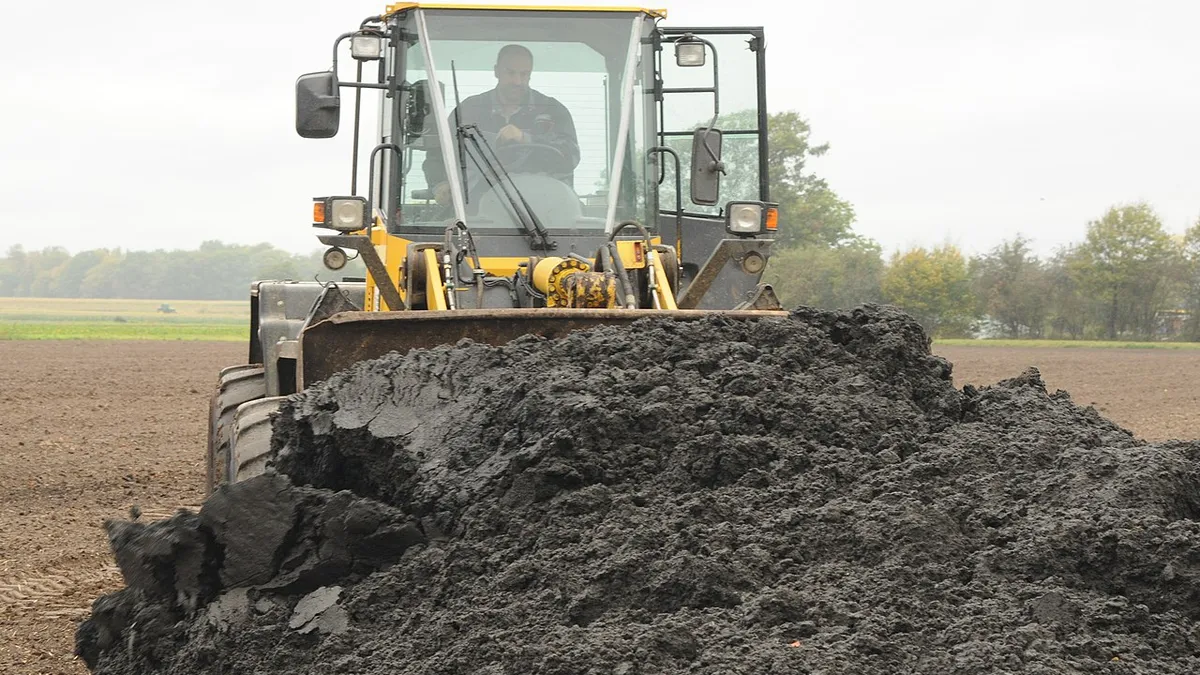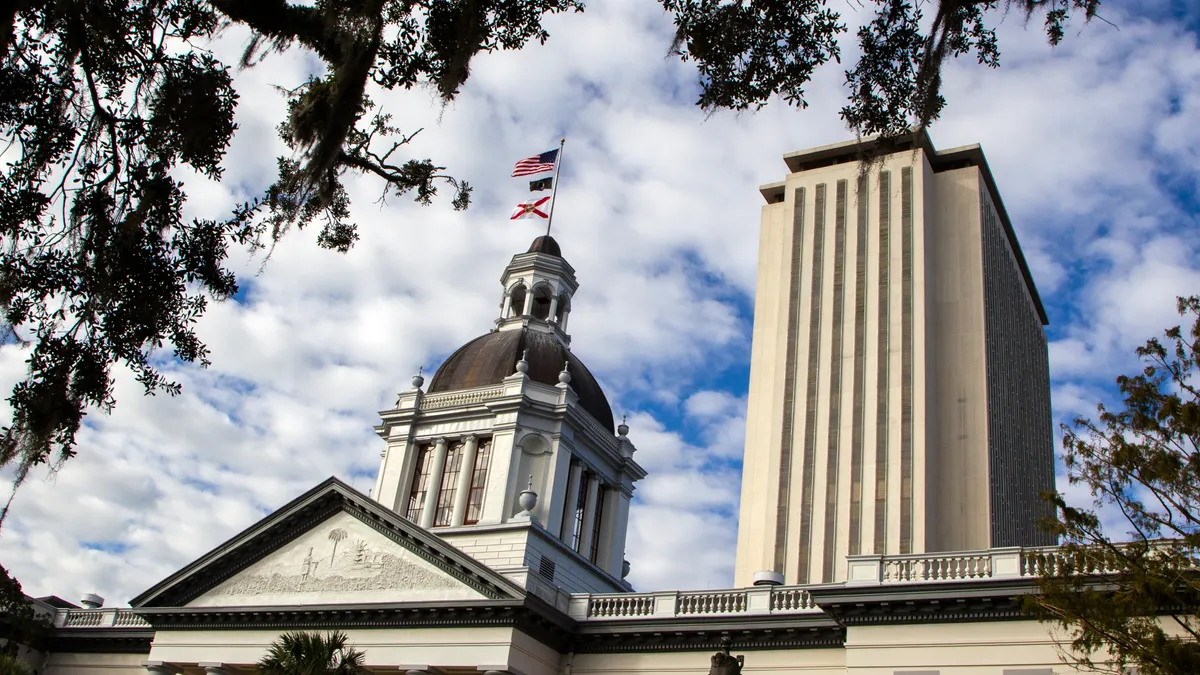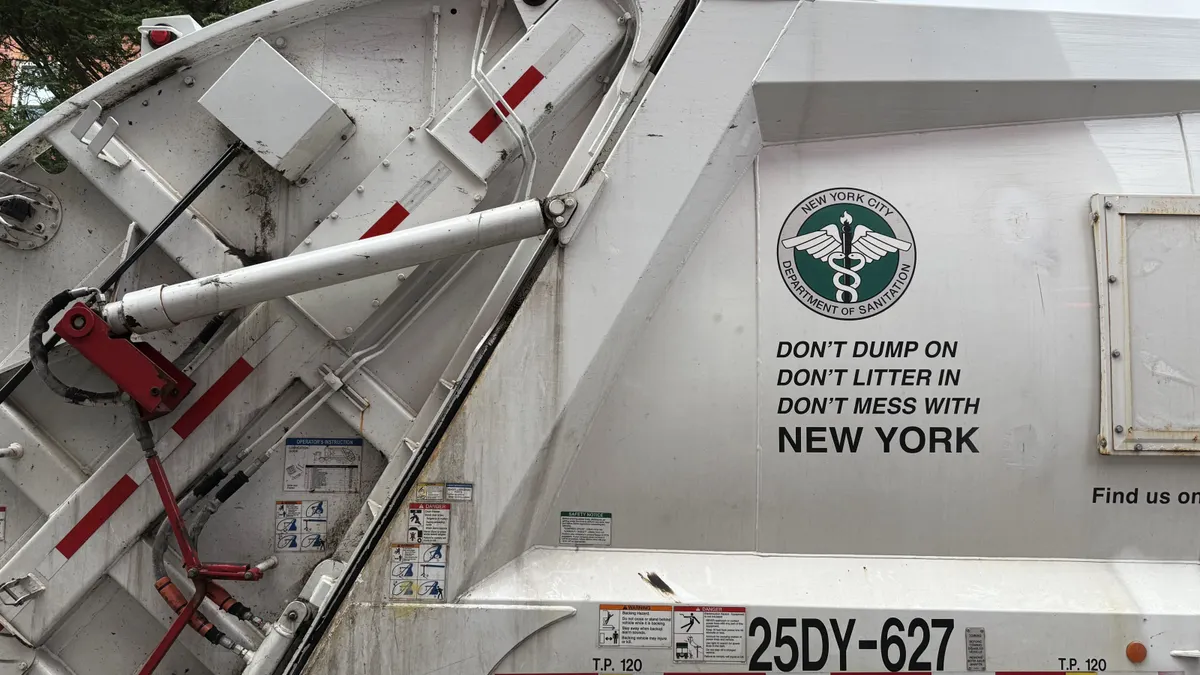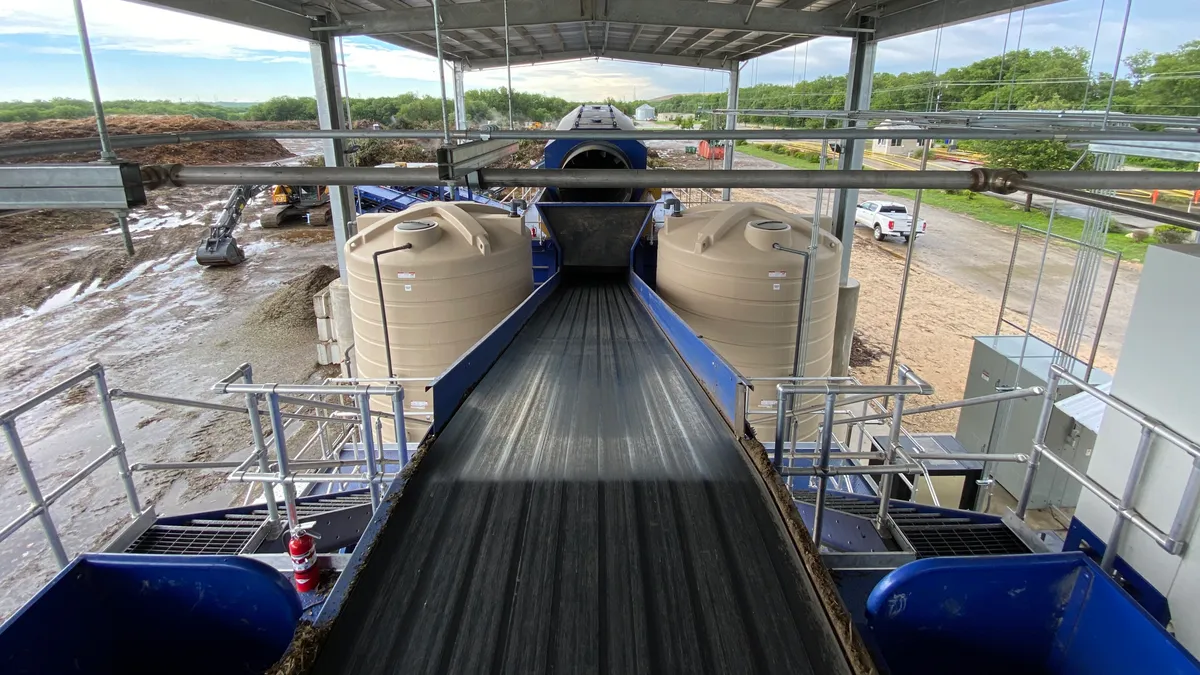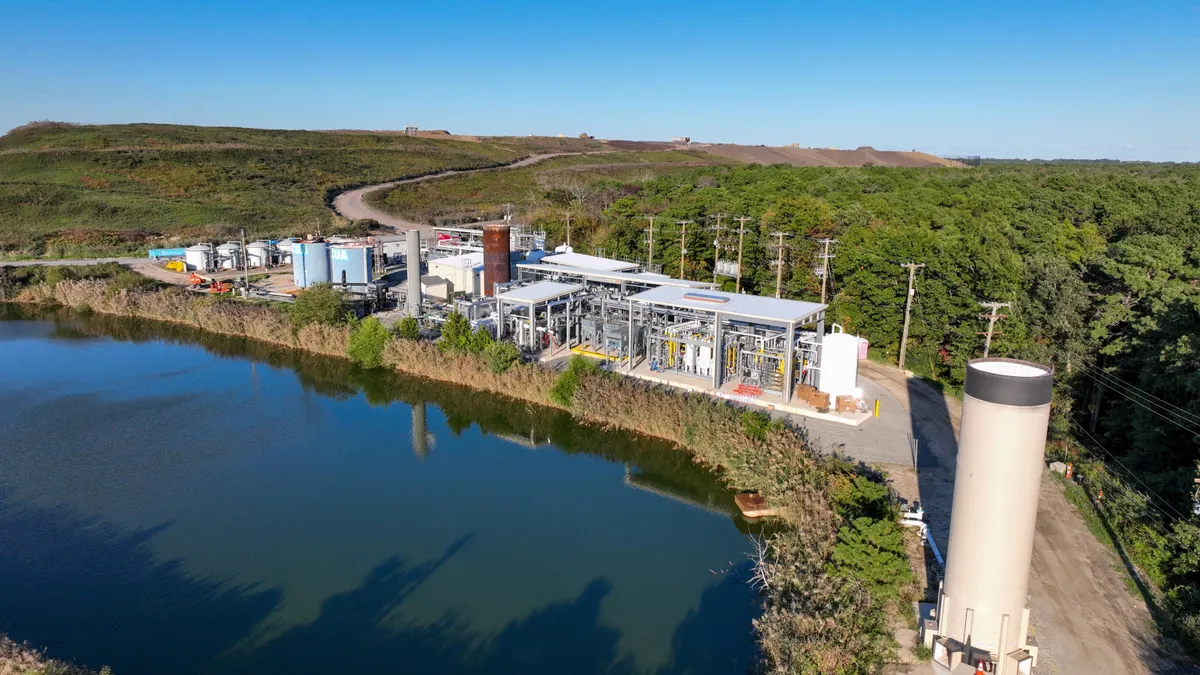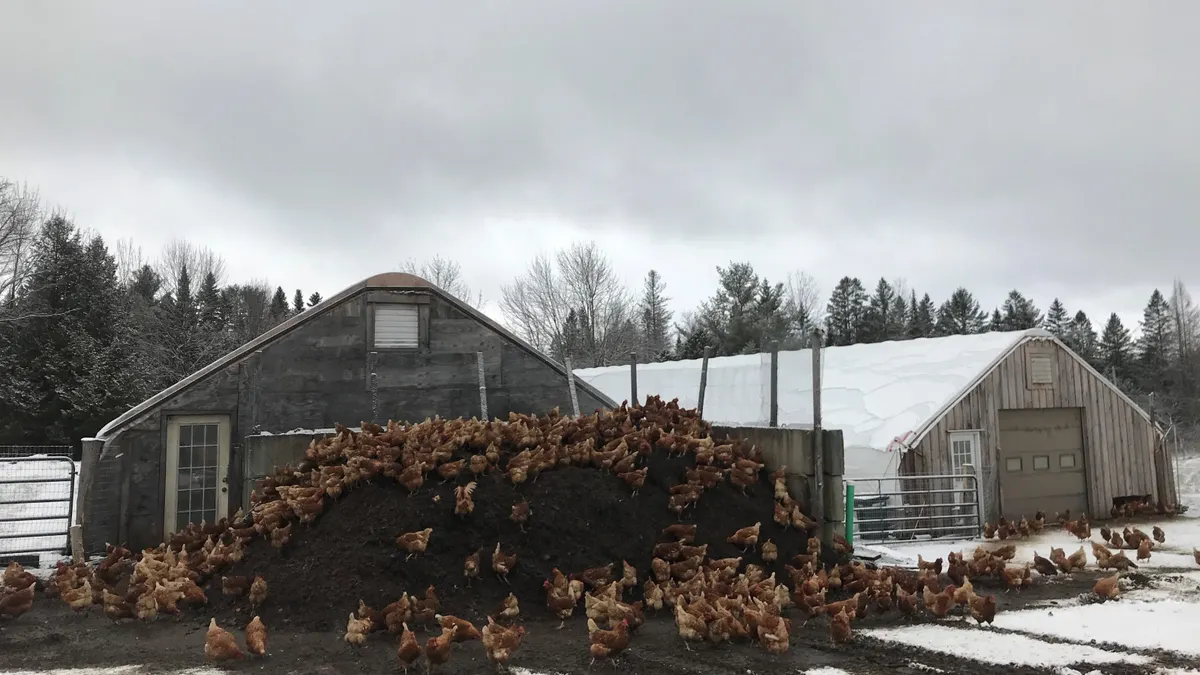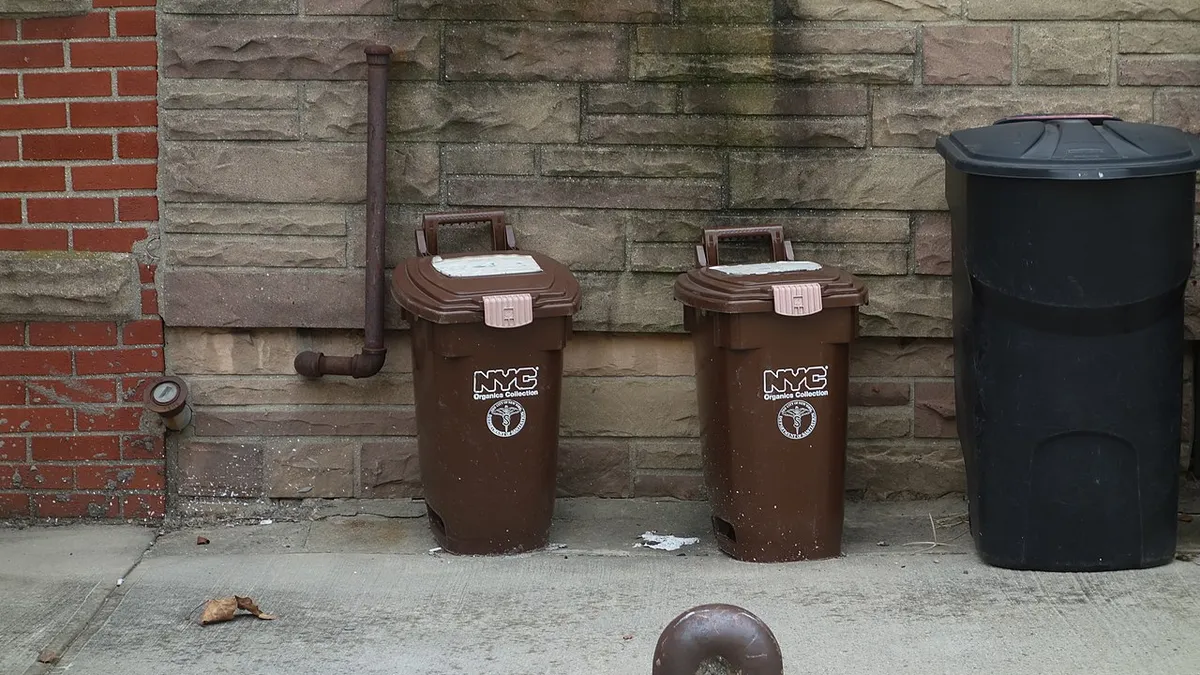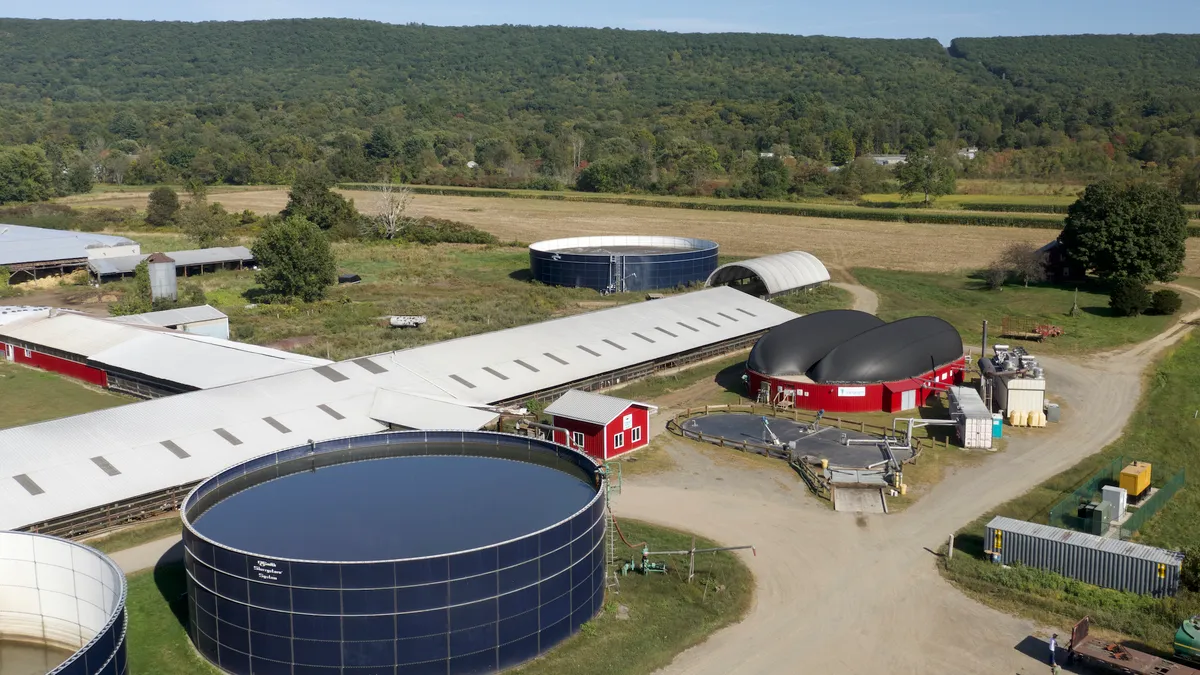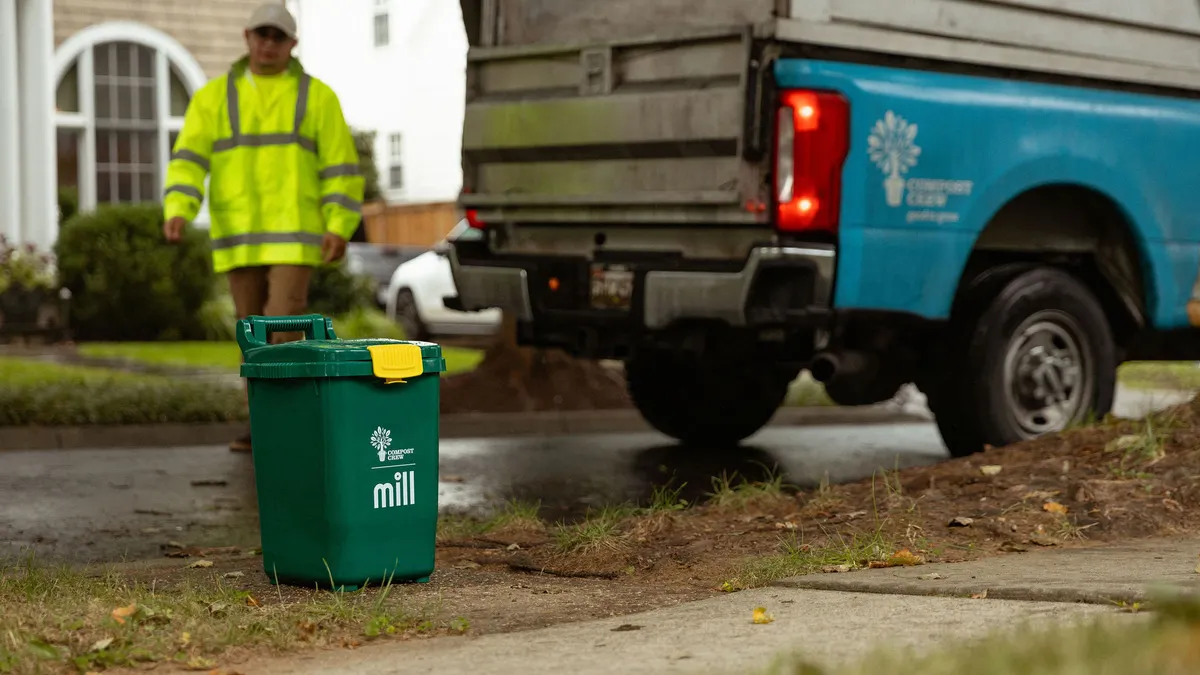A federal judge dismissed a lawsuit Monday that attempted to force the U.S. EPA to regulate contamination from per- and polyfluoroalkyl substances in sewage sludge. The suit, brought by farmers and public health groups last year, is one of several seeking to address growing concerns about contamination from the family of chemicals collectively called PFAS.
More than half of sewage sludge produced in the U.S. is applied on agricultural land as fertilizer, according to EPA data. The rest is composted with other organic material or sent to landfills and incinerators for disposal. The question of what to do with the material, which can be contaminated by upstream sources such as manufacturing plants and mills, has become more pressing as farmers fear that contaminated sludge can ruin their livestock or crops.
In Johnson County, Texas, farmers allege that their land was contaminated by the spreading of biosolids on a neighboring plot. The farmers, who brought the case against the EPA, allege that some of their animals had tested with PFAS levels hundreds of times the limits set by states like Michigan and Maine to protect public health. They argued that the EPA has a responsibility under the Clean Water Act to regulate harmful PFAS chemicals in sewage sludge, and that it has avoided doing so despite being aware of health risks.
The judge’s decision is a setback for the farmers in Texas and elsewhere who are searching for federal leadership on PFAS, said Laura Dumais, staff counsel at Public Employees for Environmental Responsibility.
“It's a hugely disappointing decision for them,” said Dumais, who represented the plaintiffs in the dismissed lawsuit. “These folks have been really terribly impacted.”
Biosolids processors — including the company Synagro, which is embroiled in a lawsuit of its own related to Johnson County — contend that their processes are not responsible for the kind of contamination that the farmers allege. Industry groups have also opposed strong limits on PFAS in biosolids. They say such regulations unfairly penalize wastewater plants and the broader waste industry, which considers itself to be a passive receiver of PFAS contamination from upstream industrial sources.
The National Association of Clean Water Agencies, which represents public water utilities, intervened on the EPA’s behalf in the lawsuit and celebrated the judge’s ruling.
“Today's ruling will help ensure that biosolids regulations will continue to be based on well-established Clean Water Act regulatory processes that provide for thorough analysis and public participation,” NACWA General Counsel Amanda Aspatore said in an emailed statement. “Those processes - not piecemeal lawsuits initiated by private parties - are what will result in sound PFAS regulations and workable PFAS solutions.”
Every two years, the EPA prepares a report analyzing potential contaminants in sewage sludge around the country. The report can inform regulations that would require wastewater treatment plants to restrict the presence of such contaminants in the sludge they produce.
Under the Clean Water Act, the EPA was instructed to prepare its first biennial report on contaminants in sewage sludge in 1986. The Water Quality Act of 1987 required the agency to set rules that would reduce contamination in sewage sludge. That led the EPA to establish its first limits for contaminants such as arsenic, lead and mercury in 1993. In 2003, the agency considered but decided not to regulate dioxins in sewage sludge used as fertilizer.
In January, the EPA released a draft risk assessment of PFOS and PFOA, two chemicals in the PFAS family, in sewage sludge. It found that the chemicals could harm farmers in concentrations as low as 1 part per billion, though it stopped short of recommending regulation of the two chemicals in biosolids.
The EPA hasn't regulated new contaminants in sewage sludge since the ‘90s, Dumais said. She said that lack of action endangers public health as evidence of both the prevalence and toxicity of PFAS chemicals in sludge grows.
States like Maine have taken an aggressive approach to regulating the chemicals, in part due to the discovery of high concentrations of PFAS chemicals on certain farms that were sickening livestock there. The Maine Organic Farmers and Gardeners Association joined the lawsuit against EPA as a plaintiff in part to seek relief for those farmers, who are now hoping for compensation from the state if they had to shut down their farms due to PFAS contamination.
“Here in Maine we have seen firsthand the problems of PFAS in sewage sludge, and it simply has to stop,” Bill Pluecker, a state representative and public policy organizer for MOFGA, said in a statement Wednesday.
The plaintiffs in the case dismissed this week, which also includes the Potomac Riverkeeper Network, plan to consider their options following the judge’s ruling. That could involve an appeal or a petition to the EPA directly, which could compel the agency to begin the rulemaking process for a PFAS limit in biosolids.



